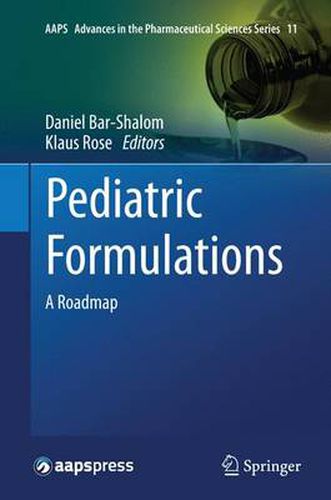Readings Newsletter
Become a Readings Member to make your shopping experience even easier.
Sign in or sign up for free!
You’re not far away from qualifying for FREE standard shipping within Australia
You’ve qualified for FREE standard shipping within Australia
The cart is loading…






This title is printed to order. This book may have been self-published. If so, we cannot guarantee the quality of the content. In the main most books will have gone through the editing process however some may not. We therefore suggest that you be aware of this before ordering this book. If in doubt check either the author or publisher’s details as we are unable to accept any returns unless they are faulty. Please contact us if you have any questions.
Until the 1990s, it was generally accepted that medicines were first developed for adults and their use in children was investigated later, if at all. One of the main tasks of hospital pharmacies was the manufacturing of child-appropriate formulations in a more or less makeshift way. The first change came in 1997 with U.S. legislation that rewarded manufacturers to do voluntary pediatric research. Ten years later, the European Union passed legislation that required manufacturers to discuss all pediatric aspects, including formulations, with the regulatory authorities as a condition of starting the registration procedure. In consequence, manufacturers must now cover all age groups, including the youngest ones. So far, pediatric formulations were more a focus for academic researchers. Through the changed regulatory environment, there is now a sudden high commercial demand for age-appropriate formulations. This book begins by highlighting the anatomical, physiological and developmental differences between adults and children of different ages. It goes on to review the existing technologies and attempts to draw a roadmap to better, innovative formulations, in particular for oral administration. The regulatory, clinical, ethical and pharmaceutical framework is also addressed.
$9.00 standard shipping within Australia
FREE standard shipping within Australia for orders over $100.00
Express & International shipping calculated at checkout
This title is printed to order. This book may have been self-published. If so, we cannot guarantee the quality of the content. In the main most books will have gone through the editing process however some may not. We therefore suggest that you be aware of this before ordering this book. If in doubt check either the author or publisher’s details as we are unable to accept any returns unless they are faulty. Please contact us if you have any questions.
Until the 1990s, it was generally accepted that medicines were first developed for adults and their use in children was investigated later, if at all. One of the main tasks of hospital pharmacies was the manufacturing of child-appropriate formulations in a more or less makeshift way. The first change came in 1997 with U.S. legislation that rewarded manufacturers to do voluntary pediatric research. Ten years later, the European Union passed legislation that required manufacturers to discuss all pediatric aspects, including formulations, with the regulatory authorities as a condition of starting the registration procedure. In consequence, manufacturers must now cover all age groups, including the youngest ones. So far, pediatric formulations were more a focus for academic researchers. Through the changed regulatory environment, there is now a sudden high commercial demand for age-appropriate formulations. This book begins by highlighting the anatomical, physiological and developmental differences between adults and children of different ages. It goes on to review the existing technologies and attempts to draw a roadmap to better, innovative formulations, in particular for oral administration. The regulatory, clinical, ethical and pharmaceutical framework is also addressed.